Back in February, Lance Hedrick showed the world that الرجّ your grounds before making an espresso could both increase the extraction and reduce the shot time of your espresso. The effect on extraction was striking, but it was the fact that it also decreased shot time that really fascinated us. That finding implied that الرجّ could let you grind finer without causing clogging, potentially allowing higher extractions without negative flavours creeping in.
Just a few months later, الرجّ appeared at the World Barista Championship, when Dominika Piotrowska, representing Austria, used الرجّ on stage for her routine. Domenika explained to us this week one very tangible benefit from الرجّ grinds:
“One significant finding was the remarkable consistency I achieved in extraction time. The difference between shots was only 0.1 seconds each time (e.g., 20.0/20.1, 20.0/20.1). This level of consistency was unprecedented for me.”
Dominika Piotrowksa dosing into blind shakers at the 2024 World Barista Championship.
Our own testing, on the other hand, gave contradictory results. الرجّ seemed to work in some situations and not others, and we never saw the combination of increased extraction and decreased shot time that made الرجّ so exciting. In some sense, this is what we expected: in our first post on the topic, we explored the possible reasons that الرجّ might work, and concluded that “the ‘best’ distribution method overall will depend on the grinder, the roast, even the ambient conditions.”
This topic has opened many new doors for espresso making, but weirdly — no one can quite work out why it works … and sometimes doesn’t work in the way you’d expect. Yes, we expected الرجّ to work better in some situations than others, but we wanted to know why it worked for Lance, and not so well for us. Does it depend on the coffee, or the grinder? Or something else entirely?
In our previous posts, we explored ‘densification’ — the idea that الطحن الناعم would combine with larger particles to create more spherical aggregates. While we still don’t have a complete answer, after some new testing this week, what we have seen suggests that this isn’t happening. In fact, we see the opposite:
الرجّ liberates الطحن الناعم!
ال الرجّ in the Basket Test
On our travels, we’ve noticed quite a few baristas starting to shake directly in the filter basket, whilst holding a dosing cup on the top like a lid. So we wanted to test the efficacy of that approach compared to using a purpose built shaker. We had a theory that possibly a lot of الطحن الناعم could be sieved through the holes in the bottom of the basket whilst الرجّ and we wanted to find out if that was a problem, or if it would affect extraction yields. But in the process of testing this, we seem to have hit upon something quite a lot more interesting.
This week our Dean of Studies, Jem Challender teamed up with Lloyd Meadows from Tortoise Espresso to test الرجّ using a Mythos grinder and a Synesso and found that الرجّ made very little difference in extraction or shot time with one coffee, and slightly increased both extraction and shot time with another. None of these results showed a statistically significant effect, but they are at least consistent with the idea that which coffee you use could affect how well الرجّ works.
We then repeated the tests with the same coffee used in the second test, but using an EK43 instead. This time, الرجّ seemed to increase extraction, although the difference was not statistically significant (p ~ 0.1). It did however decrease the shot time by a couple of seconds, and that difference was significant (p < 0.05).
| No shake | Shake | |
| Mythos test 1 | ||
| الاستخلاص (%) | 20.1 | 20 |
| Shot time (s) | 21.6 | 20.6 |
| Mythos test 2 | ||
| الاستخلاص (%) | 20.5 | 21.3 |
| Shot time (s) | 28 | 30.3 |
| EK43 | ||
| الاستخلاص (%) | 21.4 | 22.4 |
| Shot time (s) | 21.8 | 20 |
Extraction yields and shot time averages for الرجّ vs not الرجّ. Results are an average of 5 shots per test. In each test, we distributed the coffee using the AutoComb. The coffee we used was a Colombian, Reinaldo Parra ‘Las Pinas’ Washed Espresso.
These results suggest that the choice of grinder is also part of the reason that الرجّ works better in some tests than others. In our last post we observed that the grinders that Lance used for his tests (the EG-1 و DF64) both produce less fines than other single-dosing grinders, which could explain why his results were so different to ours.
If it is the behaviour of الطحن الناعم that determine how الرجّ works, then it’s no surprise that the effect is different with different coffees and grinders, and even in different locations. The amount of الطحن الناعم you get while grinding depends on the coffee and the grinder — as well as many other factors, including temperature، فإن moisture content of the beans، فإن condition and alignment of your burrs. This alone can explain why we get different results than Lance, and even different results from one test to the next.
Free Your الطحن الناعم
But what is it that الطحن الناعم are doing when we shake the grounds? You remember early on in the الرجّ discussion, coffee researcher و roaster Dr Mark Al-Shemmeri, theorised that الرجّ could have an effect similar to ‘densification’; a process used in industrial roasteries when packing pre-ground coffee. A densifier is essentially a large mixer, and the mixing process smooths out the jagged edges of larger coffee particles, and forces الطحن الناعم to lodge inside their pores. This produces aggregates that act like denser, more spherical coffee particles and reduce the number of free الطحن الناعم in the grounds.
عند we tried measuring the particle size distribution of grounds after shaking, however, we found that the opposite was happening. Using Professor Abbott’s Grind Size Analysis app, we saw an increase in the number of particles below 100µm after الرجّ.
But here’s where it gets quite bizarre: During our most recent tests, when pulling shots with shaken grounds, the portafilters seemed to get dirty more quickly. Take a look at these photos below. Each photo shows the residue left behind on the bottom of the portafilter after pulling just one shot. The portafilter was spotlessly clean prior to pulling each shot.
الرجّ grounds releases الطحن الناعم from the coffee. The inside of a portafilter after making one espresso shows the difference that الرجّ makes. Without الرجّ (left), the portafilter still looks clean. After الرجّ in a dosing cup with the filter basket on top (middle) or with a blind basket (right) a lot more الطحن الناعم and residue are visible.
We tested this several times, and each time the result was the same. When we made a shot without الرجّ, as seen on the left, a very small amount of الطحن الناعم collected on the base of the portafilter as you would expect. Then we tested the effect after الرجّ for 5 seconds with a dosing cup inserted directly on top of the filter basket (middle) — cocktail bartender style. To check that this effect wasn’t simply the result of الطحن الناعم escaping through the holes in the basket, we also tried الرجّ in the same dosing cup but with a blind basket on top. الرجّ appears to increase the amount of undissolved solids coming through the holes in the portafilter — and in the case of الرجّ in the filter basket the amount of residue is dramatic. With both methods the increase in the amount of solid on the floor of the portafilter is obvious, but we’re guessing this is only a fraction of what is being washed down into the cup below.
If الرجّ releases more solids from the coffee bed, perhaps this also explains the flavour and tactile effects we saw in our previous post. Miruna Tudose and the team at the fabulous Origo Coffee in Bucharest reported a “somewhat powdery texture, and a lack of clarity” in their shots after الرجّ the grounds.
Please note, for the photos above, we used an HE% basket from Pesado, which has pretty large holes to allow high flow. With that in mind, we also checked how much coffee escapes through the holes in the basket if you really go for it with the الرجّ. After 30 seconds of forceful الرجّ, we were able to collect around 0.1 g of coffee — not a huge amount, but perhaps enough to have an effect on how the shot runs.
To Shake or Not to Shake?
At the end of all these tests, our conclusion remains the same: whether or not الرجّ increases extraction and decreases shot time seems to vary, depending on your coffee, your grinder, and many other factors. It may well be that الرجّ is more beneficial if you have a high-end grinder, like the EG-1.
If you’re going to shake, then it’s probably better — and definitely cleaner — not to shake directly in the filter basket. A dedicated tool like the Blind Shaker from Weber Workshops is in any case far more ergonomic than trying to shake a heavy portafilter.
But whether you shake the coffee in the portafilter or in a dedicated shaker, keep an eye on your spouts. You might find you need to rinse the portafilter more often than usual to keep the coffee tasting clean and sweet over the course of a long day’s espresso making.
Ultimately, the only way to know if الرجّ will work for you is to try it out for yourself for every coffee that you serve, checking the effect on flavour as well as extraction before making a decision. But if you have the right setup, and the right coffee, to benefit from الرجّ, it’s a marvel how effective it can be.
Methodology
The Kit We Used
- For these tests we used a Synesso Hydra.
- The preinfusion pressure was running 3 bar and لضغط الضخ was set to 8 bar.
- We used Pesado HE% Baskets.
- The EK43 has titanium coated التروس.
- We used a Rhinowares stainless steel dosing cup.
- We tamped using a Puqpress and distributed using the AutoComb for all shots.
- We did not tap the basket vertically.
How We Shake
- For the ‘الرجّ in Basket’ method we dosed the coffee into the basket using the dosing cup; left the dosing cup in place (upside down above the basket) and shook the portafilter and dosing cup like a cocktail shaker for 18 shakes (five seconds of الرجّ).
- For the ‘الرجّ out of basket’ method, we placed a blind basket on top of the dosing cup to stop the coffee falling out and shook that like a cocktail shaker, also for 18 shakes. (That’s not a bad shaker hack if you’re on a budget by the way.)
- For the ‘No Shake’ method we did everything the same as the aforementioned الرجّ methods, just no shake.
- Aside from the three pics we’ve already shown you (above) we pulled another three repetitions of each method which you can see below.
Shaken out of basket
Shaken in basket
A Future Experiment
Seeing as there’s a difference in the amount of grinds sitting on the floor of the portafilter from these three approaches, there’s very likely to be a difference in the amount of solid in the cup. So how to test that? One idea we’ve had is to pour an espresso through a filter paper; wait for it to drain; then pour some more water through the paper to rinse out the dissolved solid. After that, we might be able to use a modified version of Prof Abbott’s grind analysis app to count the particles that are trapped in the filter paper and measure their diameters.

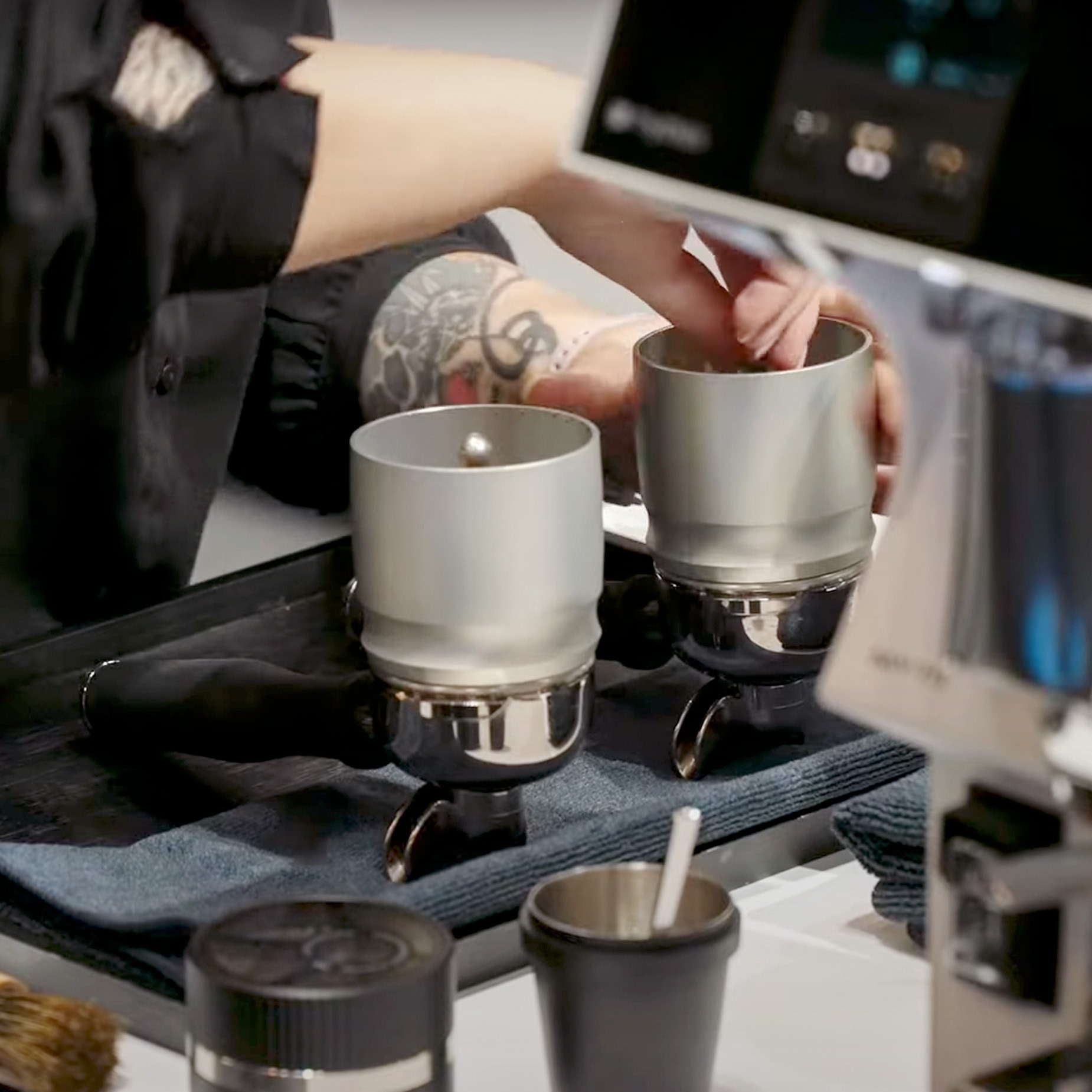
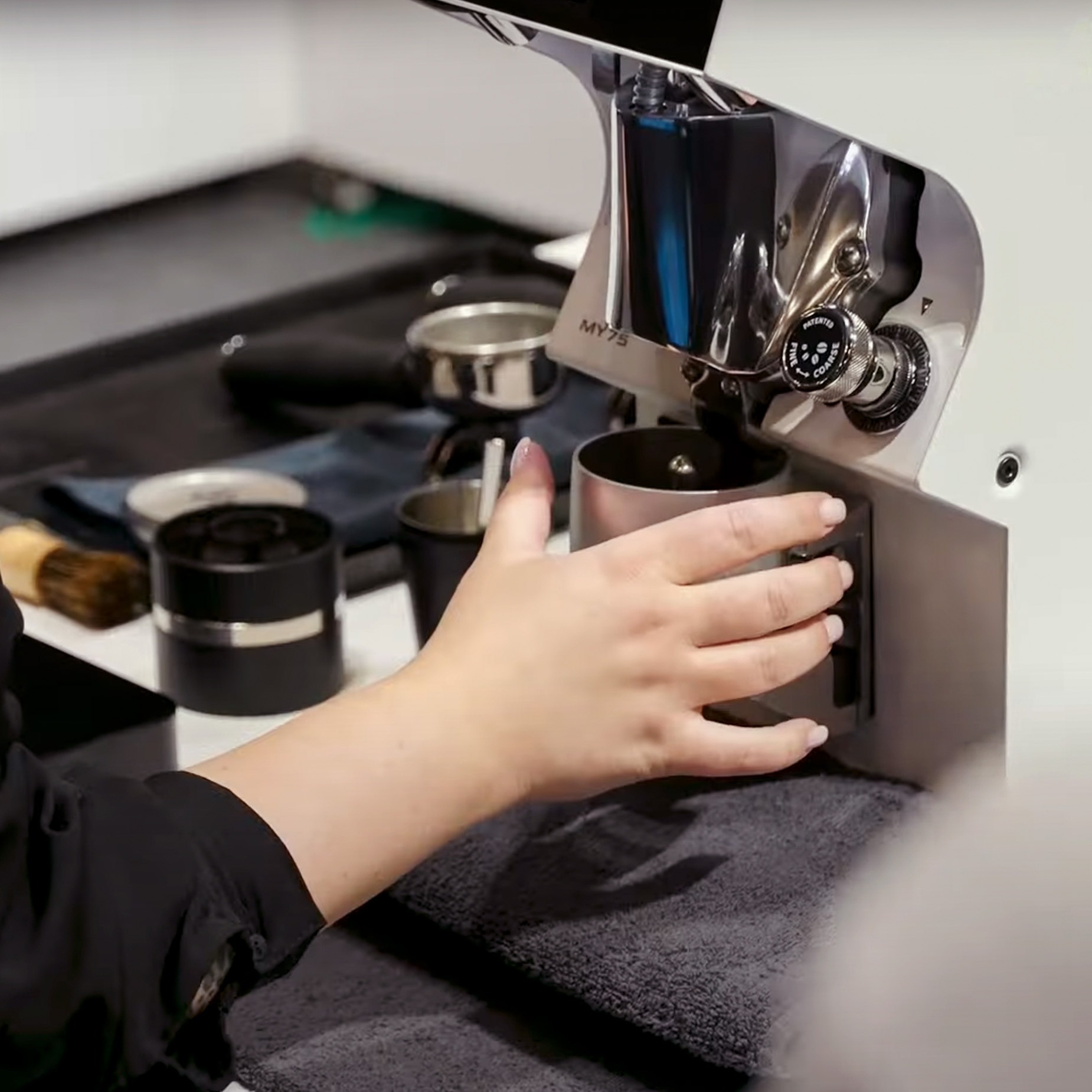
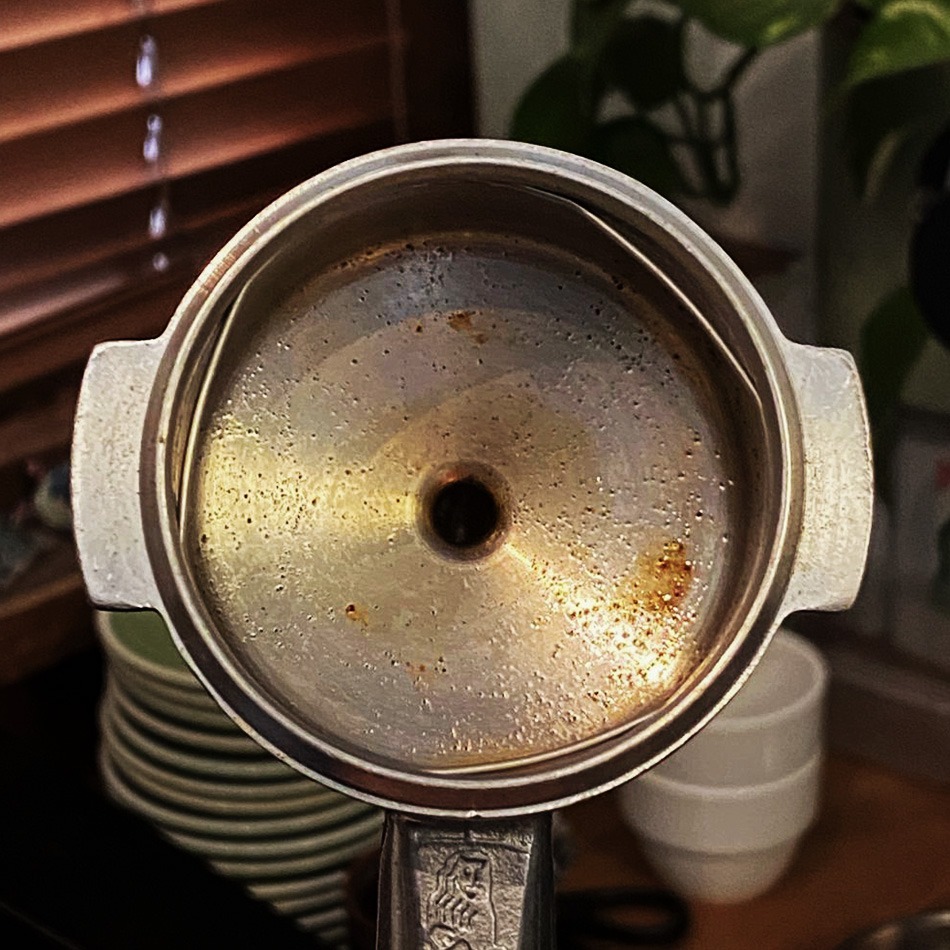
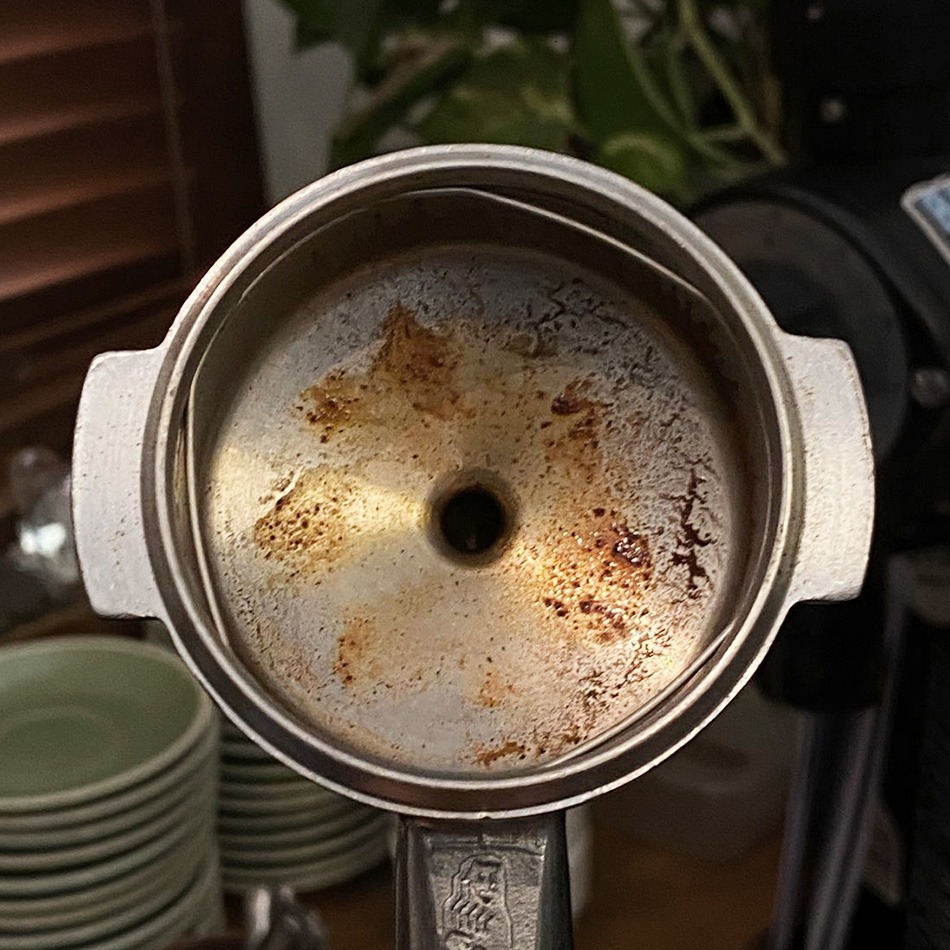
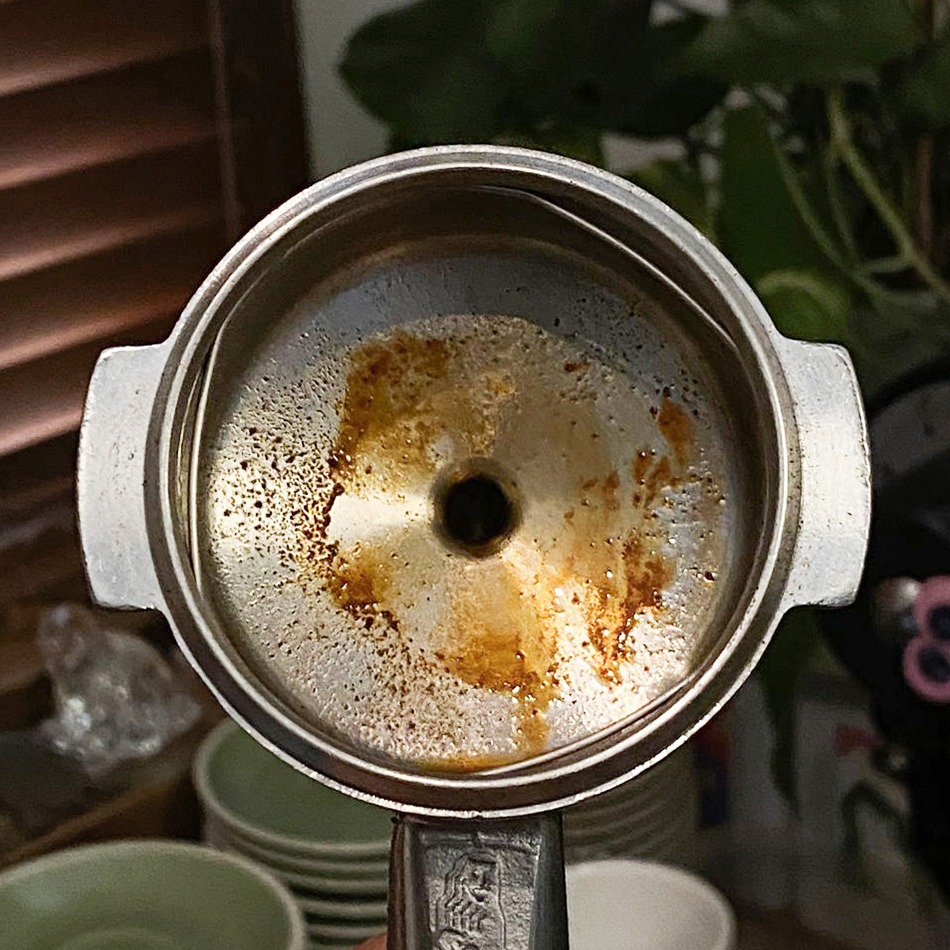

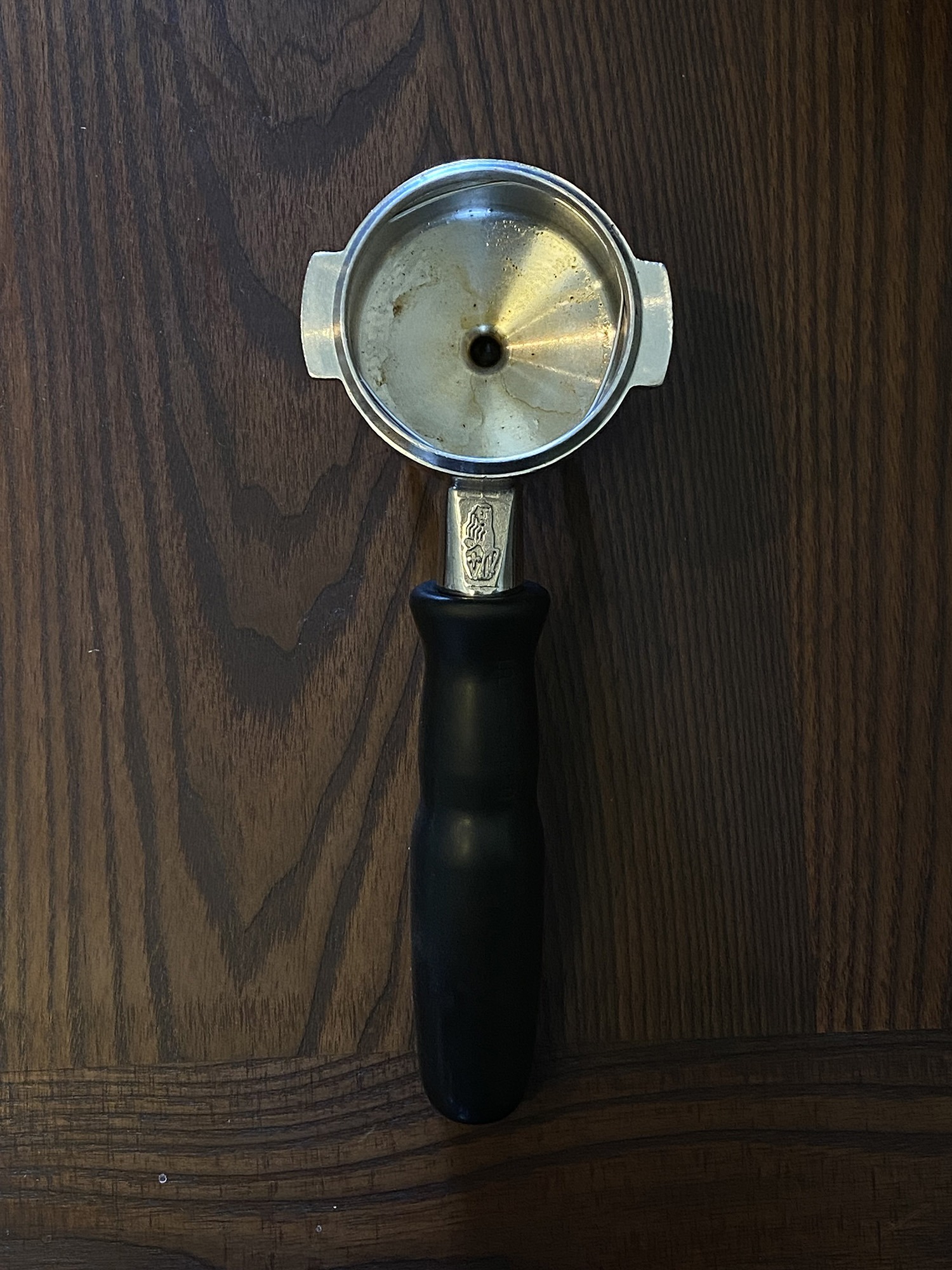
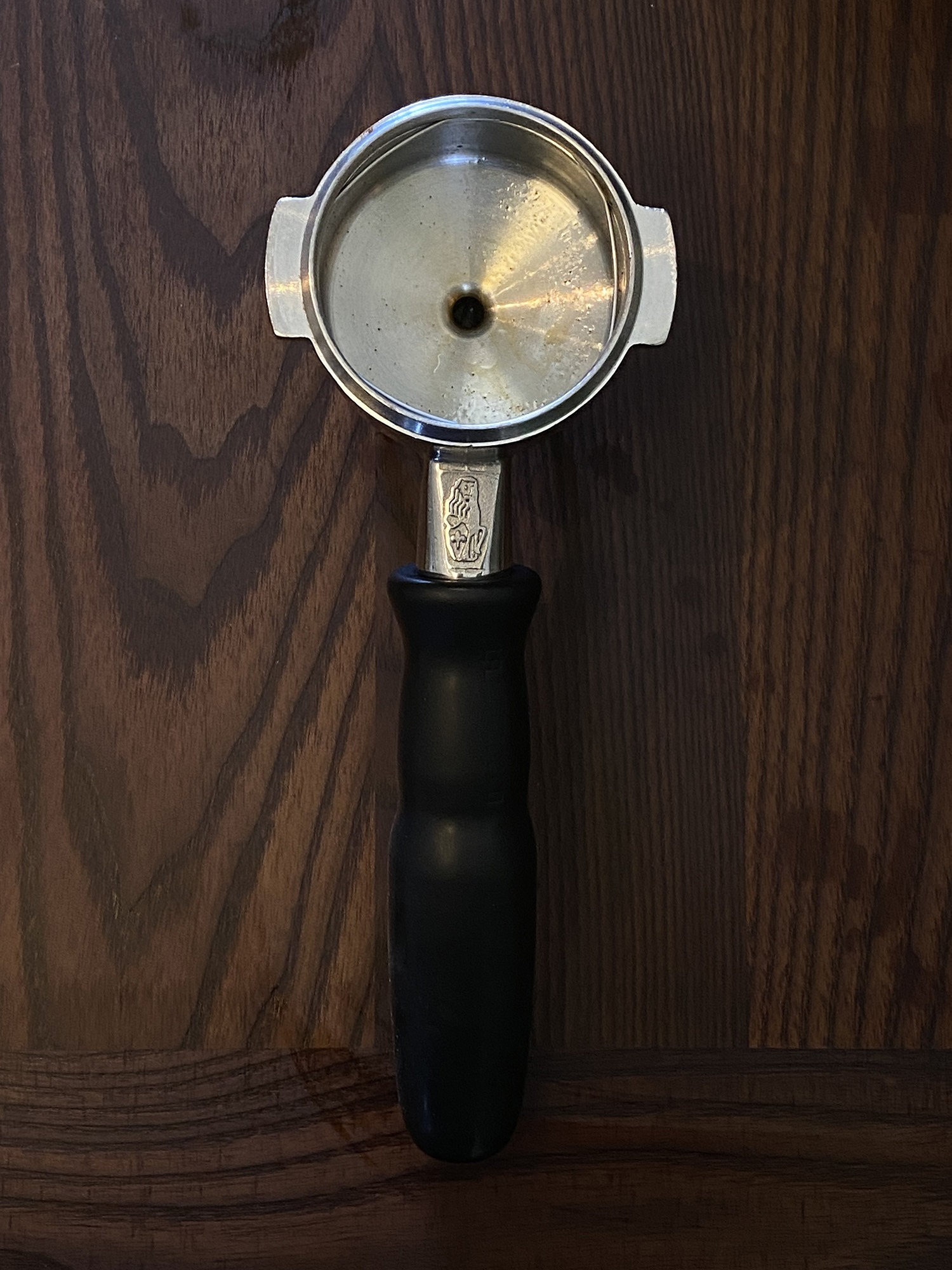
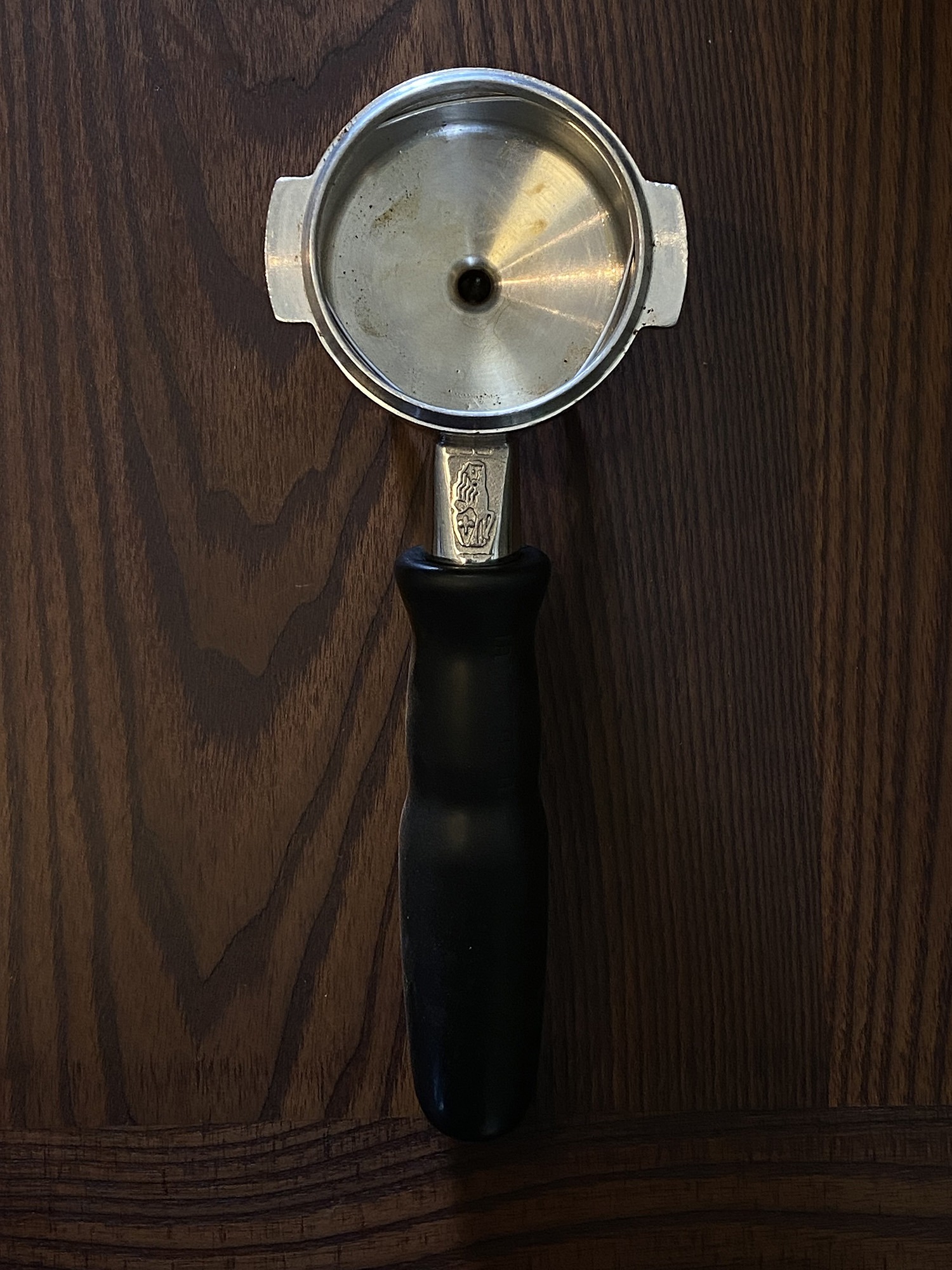


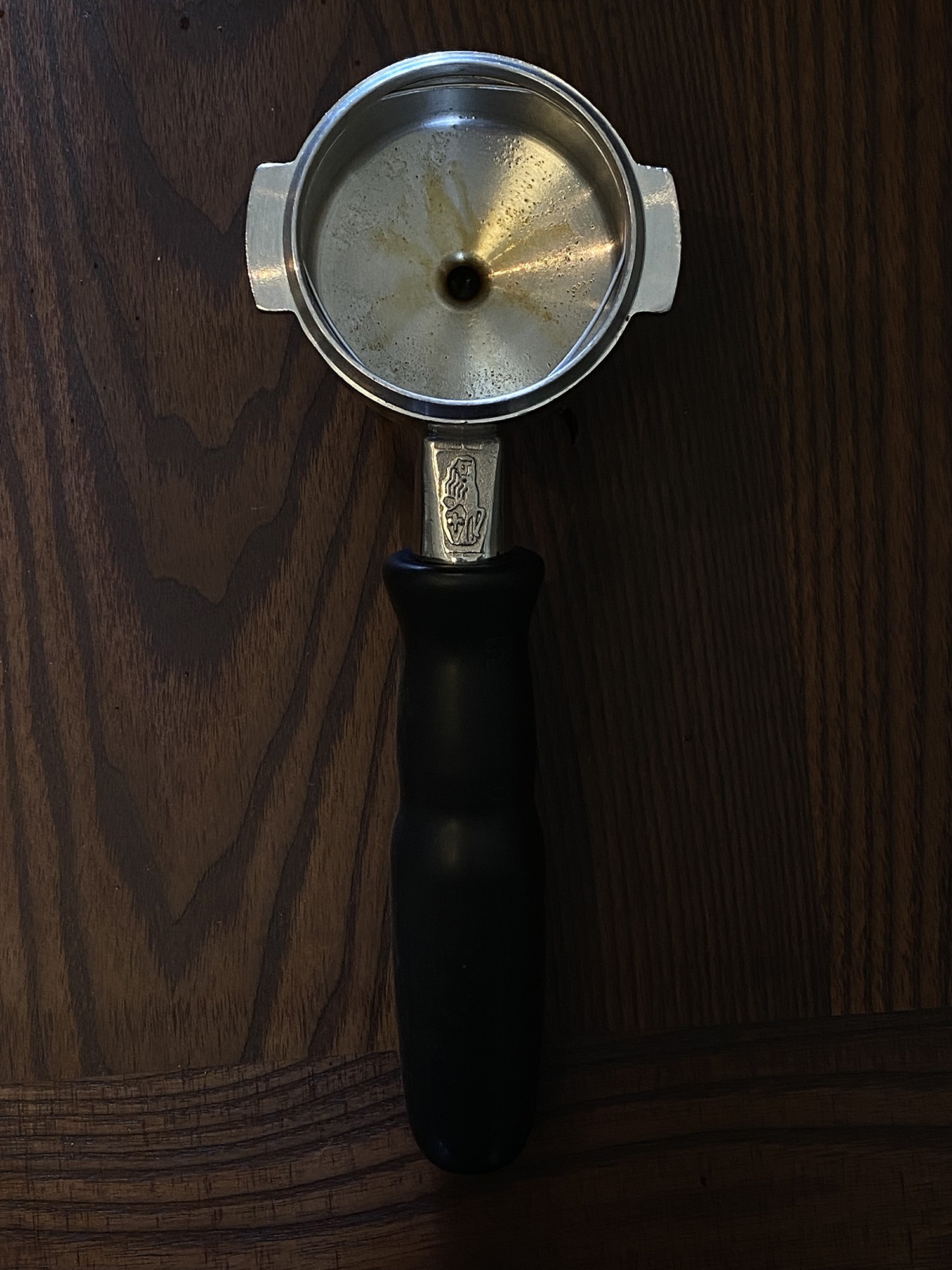
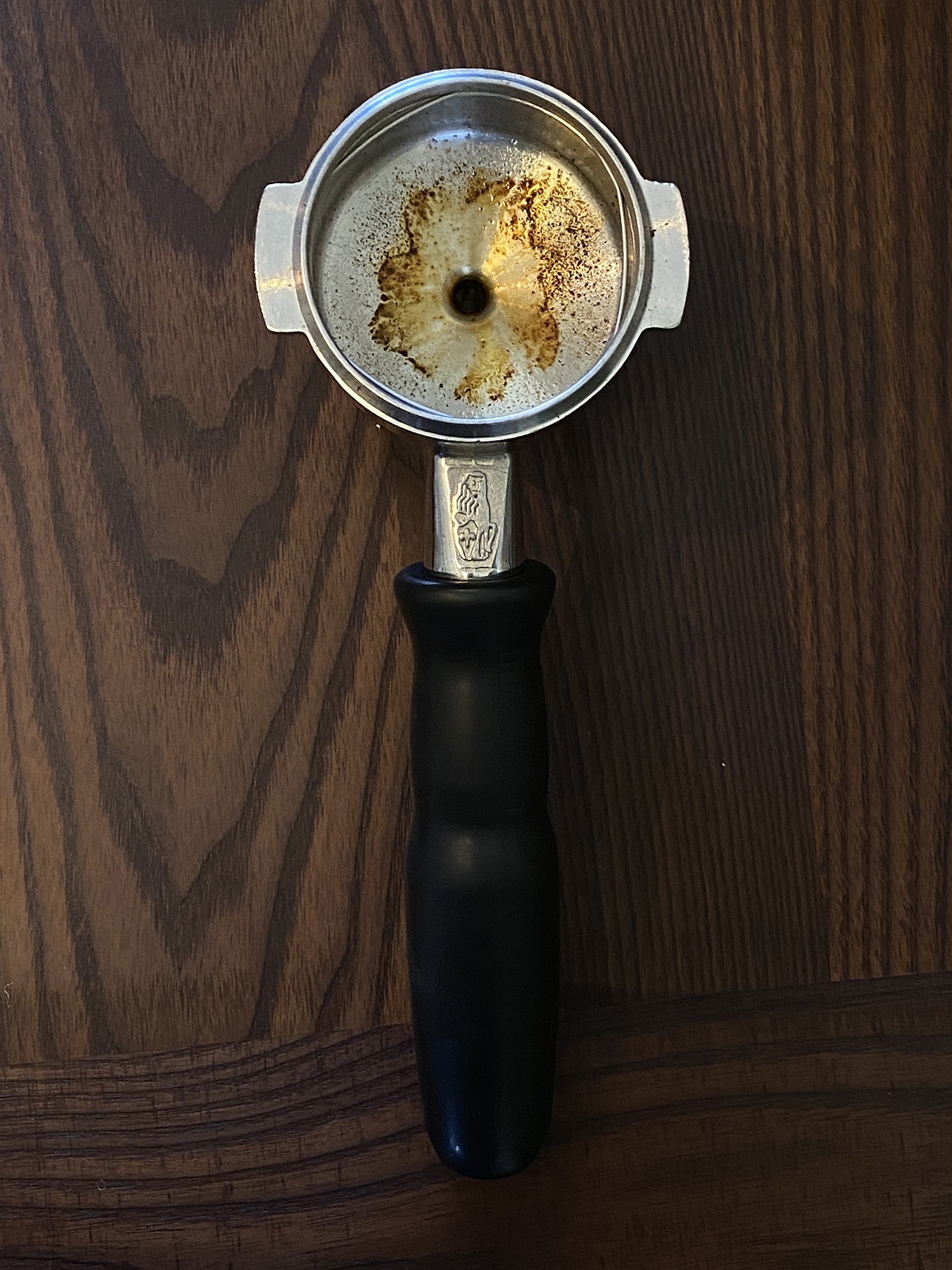
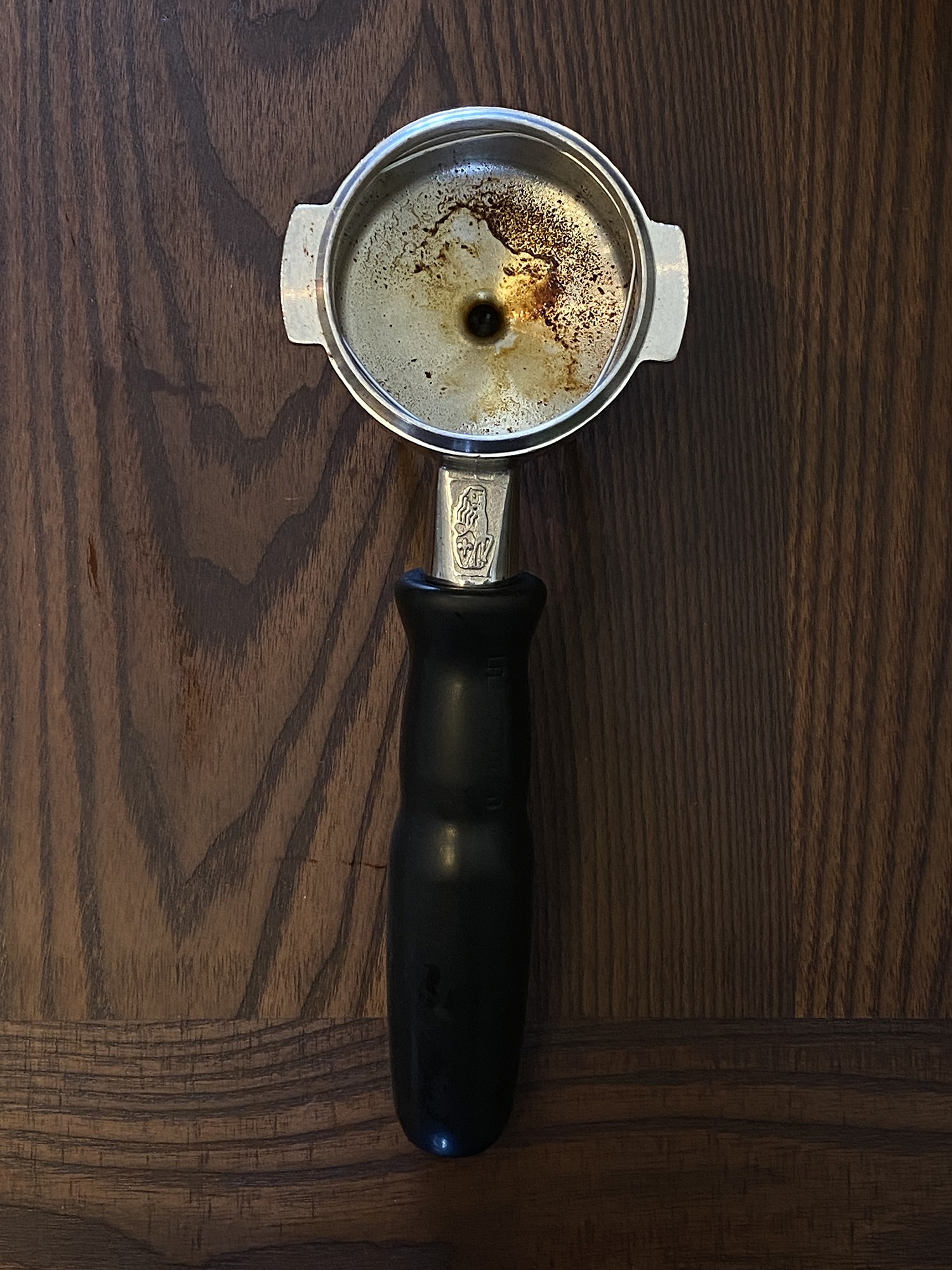
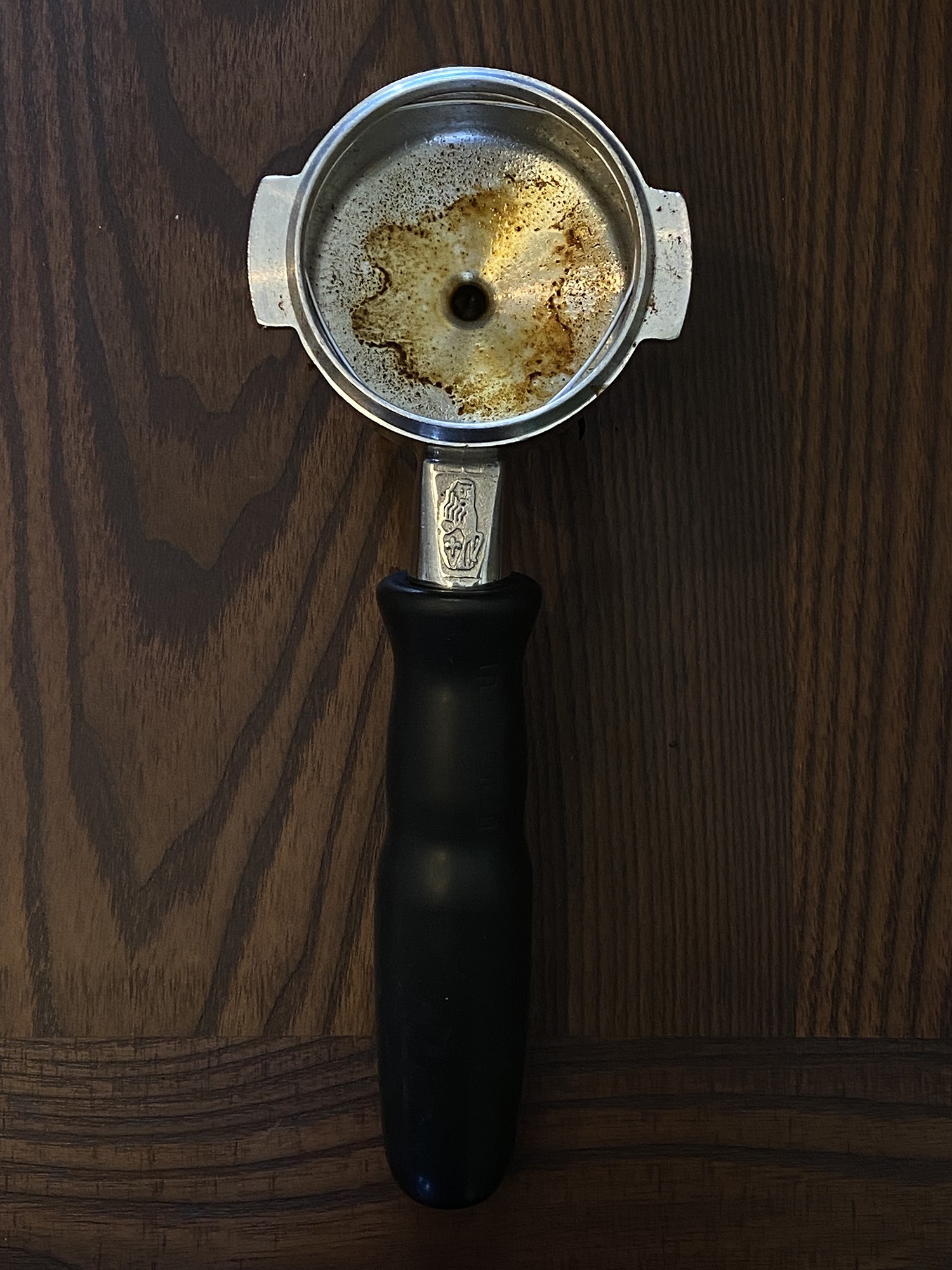



Execellent Post!
Very interesting post guys. I always enjoy reading your content.
The only information I have about densification in coffee grinding comes from your last post on the matter, but I wonder if the the difference in your test results could stem from what appears to be a key distinction between the industrial process and shaking the grounds?
In industrial densification I would assume that there is a mechanical force applied from a large mixer to compress and smooth out particles, while shaking on the bar simply redistributes them.
The consistent conditions in industrial densification, with pressure applied evenly, could be the reason that denser particles are created, while shaking could lead to inconsistent packing of fines and grounds.
When you shake coffee grounds, the particles are essentially being tossed together rather than crushed. This process might cause the finer particles to settle at the bottom of the portafilter due to gravity, but it doesn’t have the same effect as densification (as I understand it).
Shaking could theoretically cause some fines to settle into the pores of larger particles, but without the mechanical force of a mixer, the degree to which this happens would be limited. As a result, shaking may not achieve the same level of consistency or reduction in free fines as densification.
Looking forward to reading more on the matter. Keep up the fantastic work !
I think Lance’s tests were done without a wdt after the shaking right? As in the shaking was the distribution method.
In your test did you try testing the shaking vs autocomb and seeing the difference ?
Makes a lot of sense. I wonder how this could be automated in the future.
nice